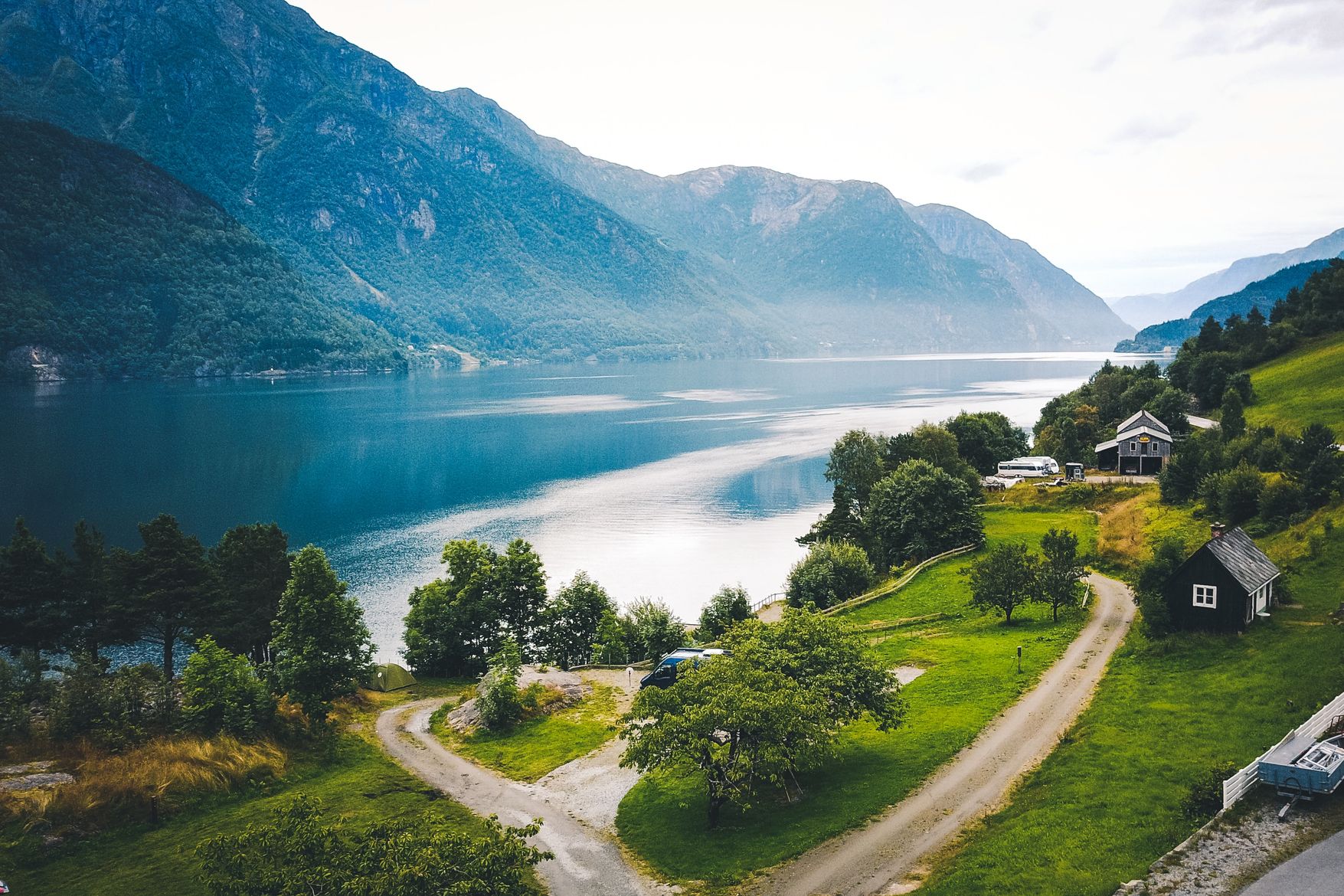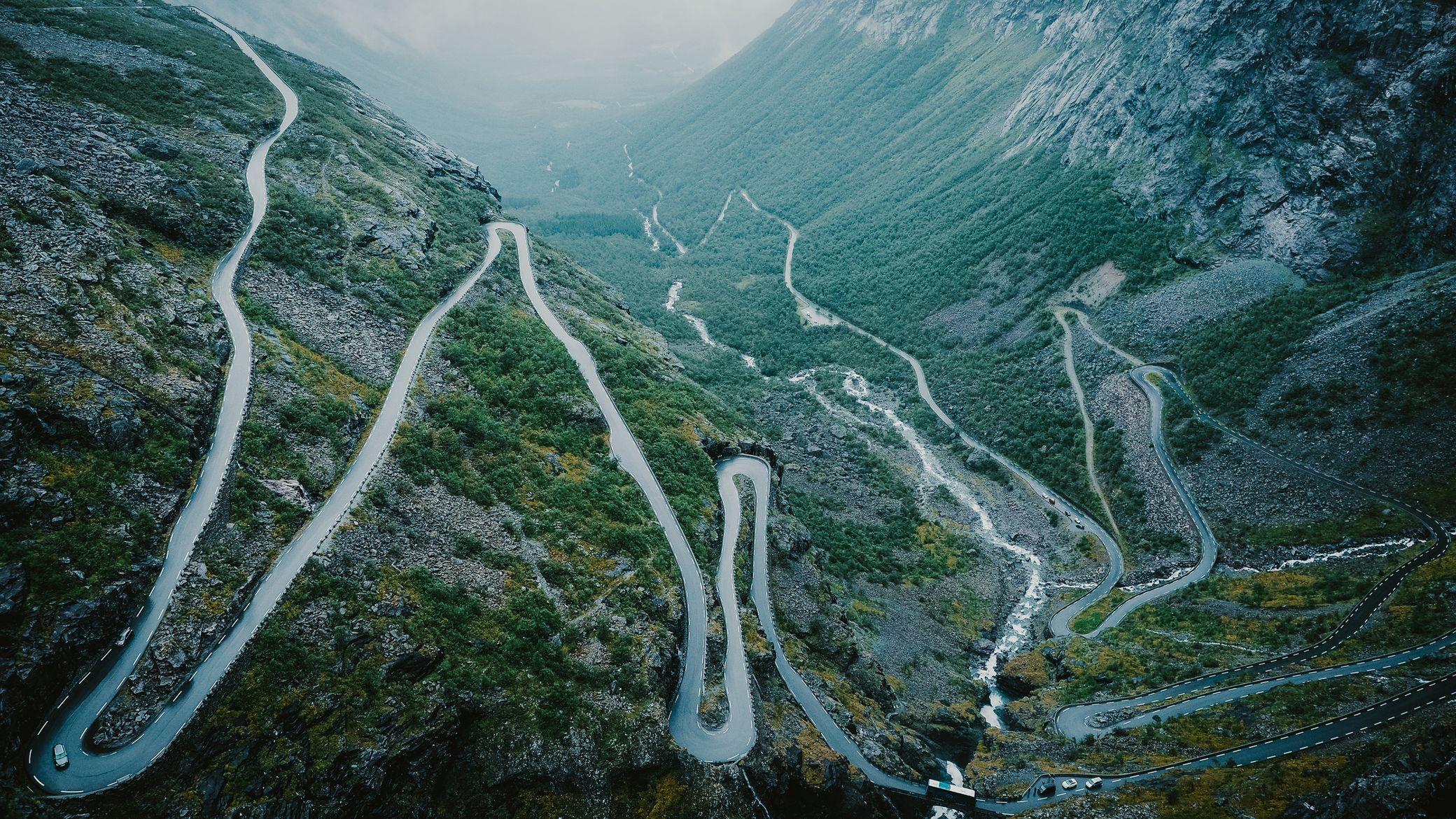Norway Traffic Guide
Driving Through Norway
Norway is the longest country in Europe. From Kristiansand in the south to Nordkapp in the north, it's over a 30-hour drive. The car is the best mode of transportation for traveling this route flexibly and comfortably, with multiple stops at scenic spots. For those who want to experience everything from urban life in the south to the Northern Lights in the north, driving is essential.
This guide contains important information about traffic rules in Norway. Additionally, you will learn more about the road conditions, the challenges in road traffic, and the topic of electromobility in Norway.
Norway Traffic Rules Overview
- In Norway, you can drive from the age of 18. Although Norway is not part of the EU, it is part of the European Economic Area, so an EU driving license is sufficient for driving there. However, drivers over 75 must be able to present a health certificate.
- In Norway, driving is on the right-hand side.
- Speed limits are 50 km/h in urban areas. Outside of urban areas, the limit is up to 80 km/h. On motorways, the speed limit is typically 90 or 100 km/h, depending on the section. Vehicles with trailers and vehicles over 3.5 tons must not exceed 80 km/h.
- All vehicle occupants must wear seat belts during transit. Drivers are not allowed to use mobile phones while driving. Additionally, lights must be on at all times throughout the year in Norway. Radar detectors are not permitted.
- The vehicle must be equipped with a first aid kit, a warning triangle, and at least one reflective vest, which must be accessible from the driver's seat.
- For drivers in Norway, the legal blood alcohol limit is 0.2.
- Trams, pedestrians, and cyclists share the roads and generally have the right of way.
Driving in Norway
The roads in Norway
Norway is a very narrow, long country characterized by its landscape of mountain ranges and fjords. Accordingly, especially in the north and in more remote areas, you may encounter narrow and steep sections of road with numerous curves.

Moreover, some parts of Norway can only be accessed via bridges, tunnels, or ferry connections. Mountain passes may also be completely closed during adverse weather conditions.
The roads in Norway are predominantly well-developed, especially the motorways connecting the major Norwegian cities, which are in very good condition. Due to the long distances and low population density in the interior, the roads are often empty.
Traffic in Norway is generally described as calm. However, driving in Norway should not be underestimated due to the sometimes challenging environmental conditions.
Petrol stations and charging points
Petrol and Diesel: Fuel prices in Norway are significantly higher than the European average. The petrol station network in the southern part of the country is optimally developed. In northern Norway, in the mountains, and other remote areas, the distances between petrol stations can be quite large. Therefore, it is advisable to inform yourself about the next available refueling options before starting your journey.

Electric Cars: Norway is a pioneer in electromobility. In recent years, significantly more electric vehicles have been registered than petrol or diesel vehicles. Consequently, the charging network for electric cars in Norway is now better developed than the network of petrol and diesel stations.
Norway has more than 17,000 charging stations and over 3,300 fast-charging stations. The coverage of charging options is considered excellent even in the far north of the country. Additionally, electric cars with Norwegian registration plates sometimes benefit from discounted or free parking in cities.
Hydrogen Cars: Hydrogen cars are also gaining popularity in Norway. In the south, you can find hydrogen fuel stations in larger cities. There are no hydrogen stations in the north yet.
Rental car or own car?
Norway can be reached from the European mainland via various routes by car. Those who prefer to avoid ferries can travel from Denmark via the Öresund Bridge to Sweden and then on to Norway. However, travel by ferry is generally preferred. You can take a car ferry from Germany, Denmark, the Netherlands, or Sweden to Norwegian destinations such as Oslo, Kristiansand, Larvik, Stavanger, Bergen, or Sandefjord.
Although Norway is not a member of the European Union, the EU license plate is sufficient for entry. Carrying an International Insurance Card is not mandatory but is strongly recommended.
In all major cities and at airports, you can rent a car from numerous different providers. You must be at least 19 years old and have held your driver's license for at least one year. Depending on the provider, the minimum age requirement may be higher. Additionally, young driver fees typically apply to drivers under 25.
Fines
In Norway, traffic violations can lead to much higher fines compared to other European countries, and these fines can be demanded directly by the police on the spot.

Excerpt from the fine catalog:
- Speeding (20 km/h over the limit): from 490 Euros (approx. £420)
- Speeding (over 50 km/h over the limit): from 1,000 Euros (approx. £850)
- Seatbelt violation: from 120 Euros (approx. £100)
- Driving under the influence of alcohol: from 520 Euros (approx. £440)
- Driving without lights: from 250 Euros (approx. £210)
- Red light violation: 710 Euros (approx. £600)
- Using a mobile phone while driving: 180 Euros (approx. £150)
- Failing to yield right of way: from 600 Euros (approx. £510)
Conclusion: How to Drive in Norway
The car is the ideal means of transport to explore Norway from south to north. The mountainous landscape and the weather can present some challenges, but thanks to the well-developed infrastructure, which is particularly beneficial for electric cars, these challenges can be easily managed.
► Here you can find more information about the toll regulations in Norway, to be optimally prepared for your trip.
